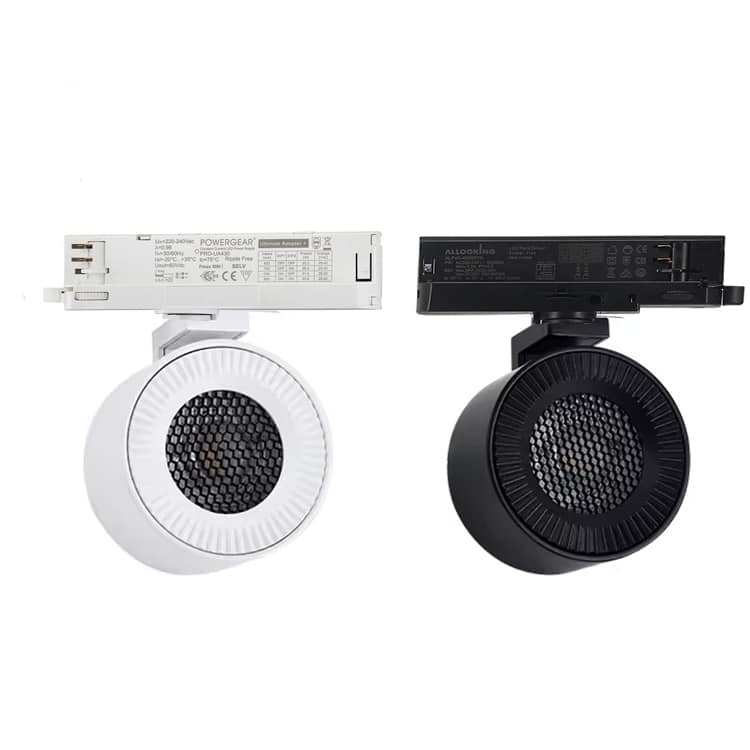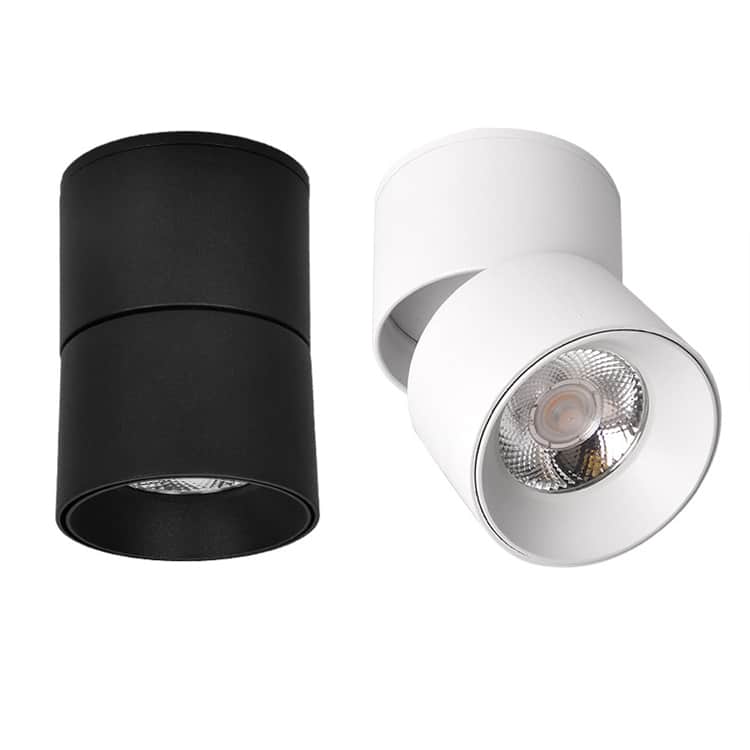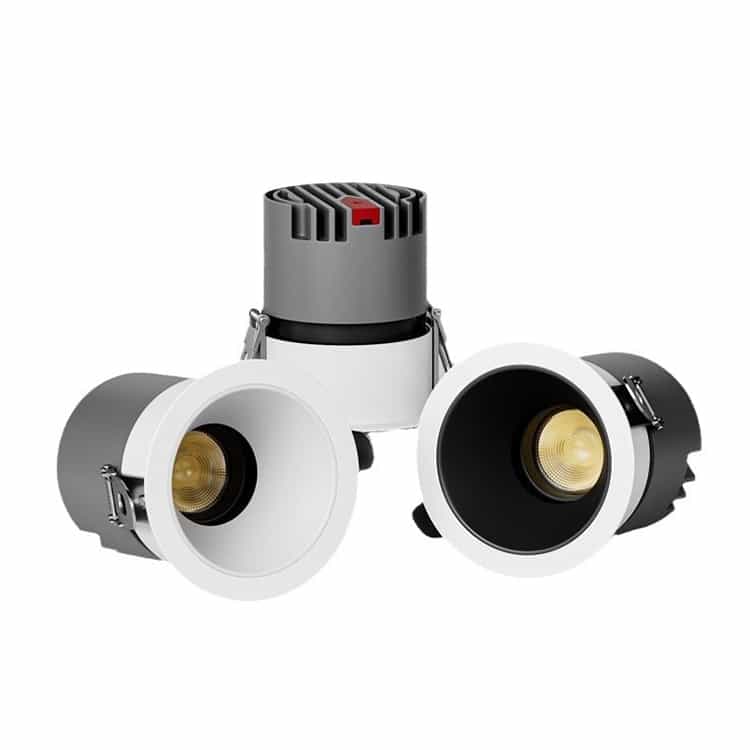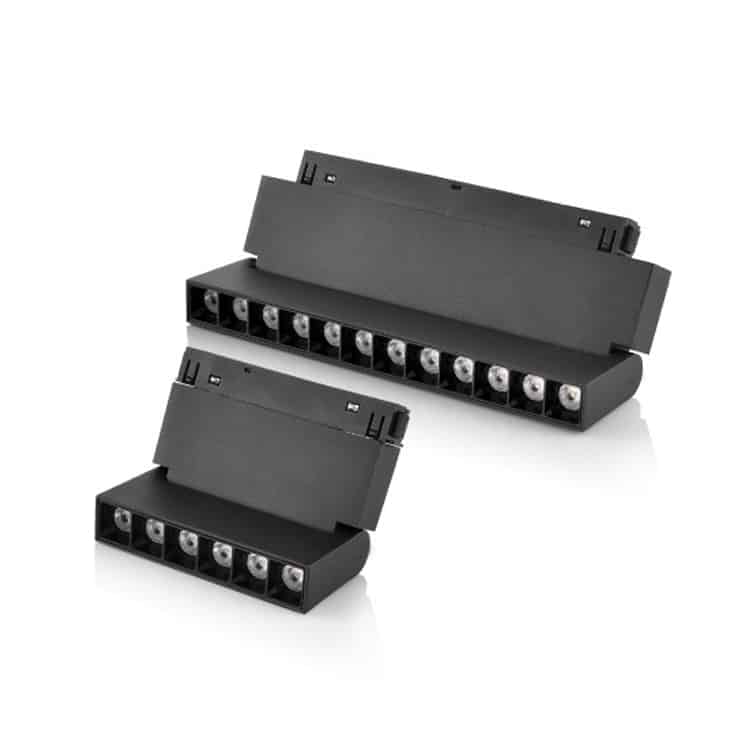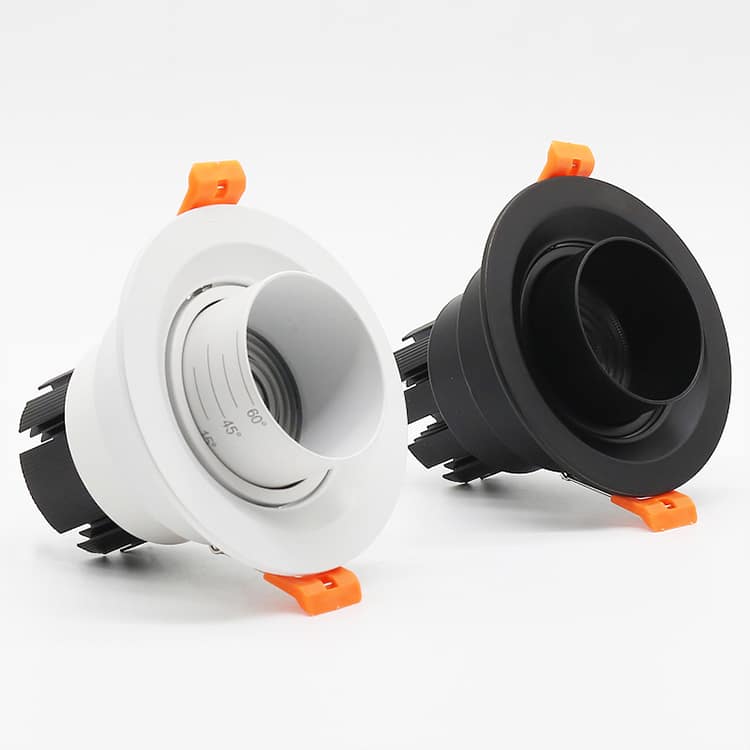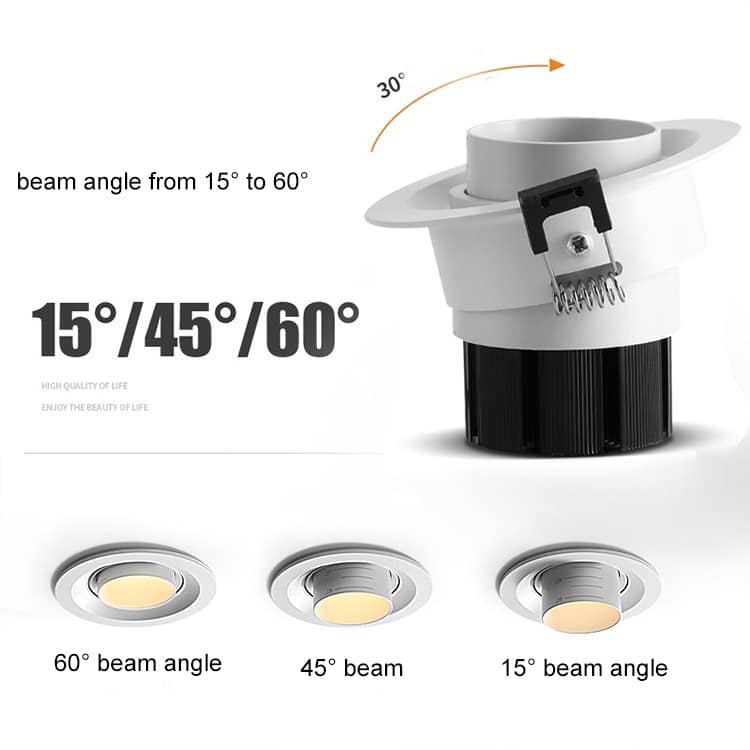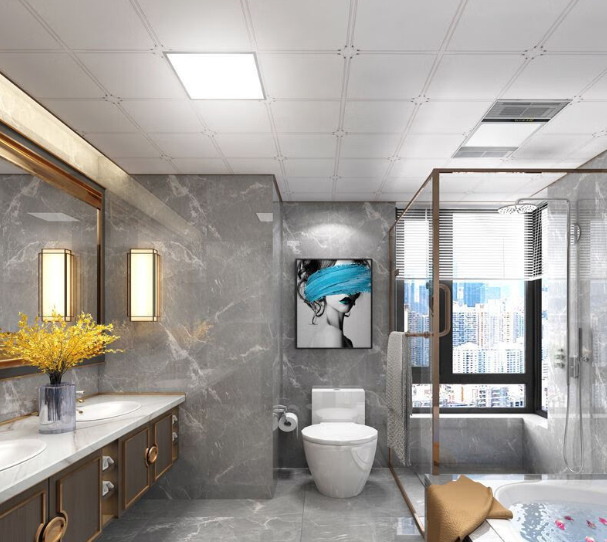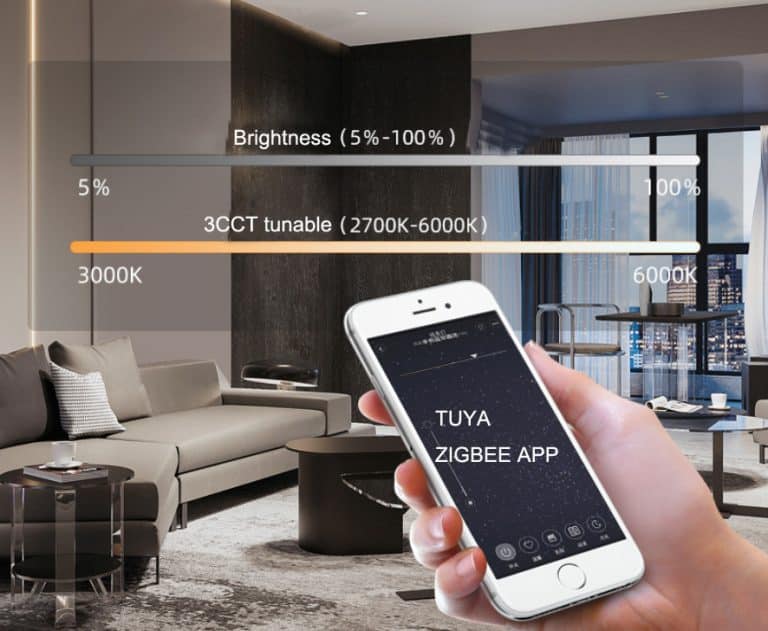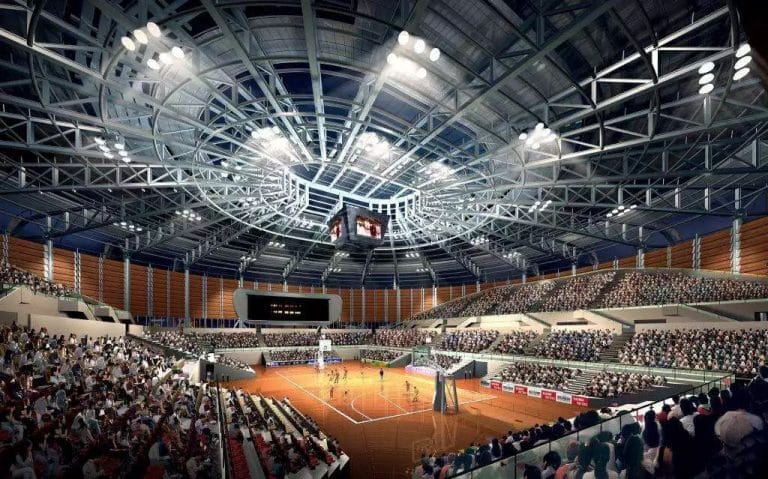Choosing the right LED spotlights is essential for creating the perfect lighting environment — whether for a retail shop, art gallery, or residential project. In this professional factory guide, we’ll explain everything you need to know before purchasing: spotlight types, beam angles, color temperature, and key technical parameters to help you select the ideal lighting solution.
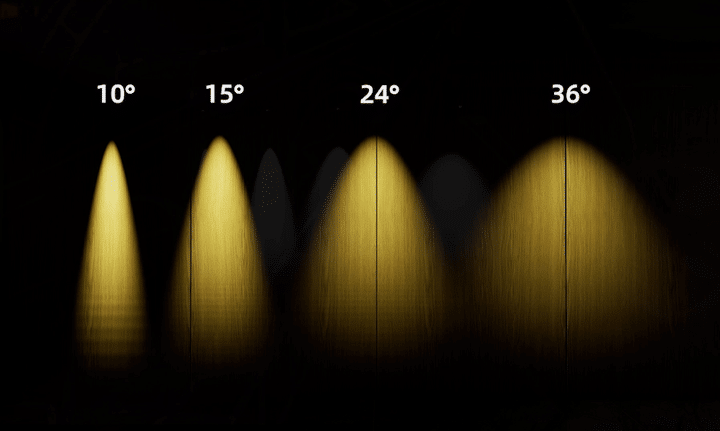
Main Types of Spotlights
A spotlight refers to lighting fixtures with directional, focused beams. While the designs can vary greatly, they always meet two key conditions:
- Directionality (adjustable angle)
- High-intensity focus with a small beam angle
LED Spotlights generally include track spotlights, ceiling-mounted spotlights, recessed spotlights, and foldable spotlights.
Know the Difference Between Downlights and Spotlights
To choose the right spotlight, you need to understand the difference between downlights and spotlights first. Telling by the lighting effect is an easy way: spotlights create a small hill-like beam, while downlights have a wide, diffused light. Additionally, spotlights usually have adjustable angles, while downlights are fixed. If you’re still unsure, check out my article What are the differences between spotlights and downlights?
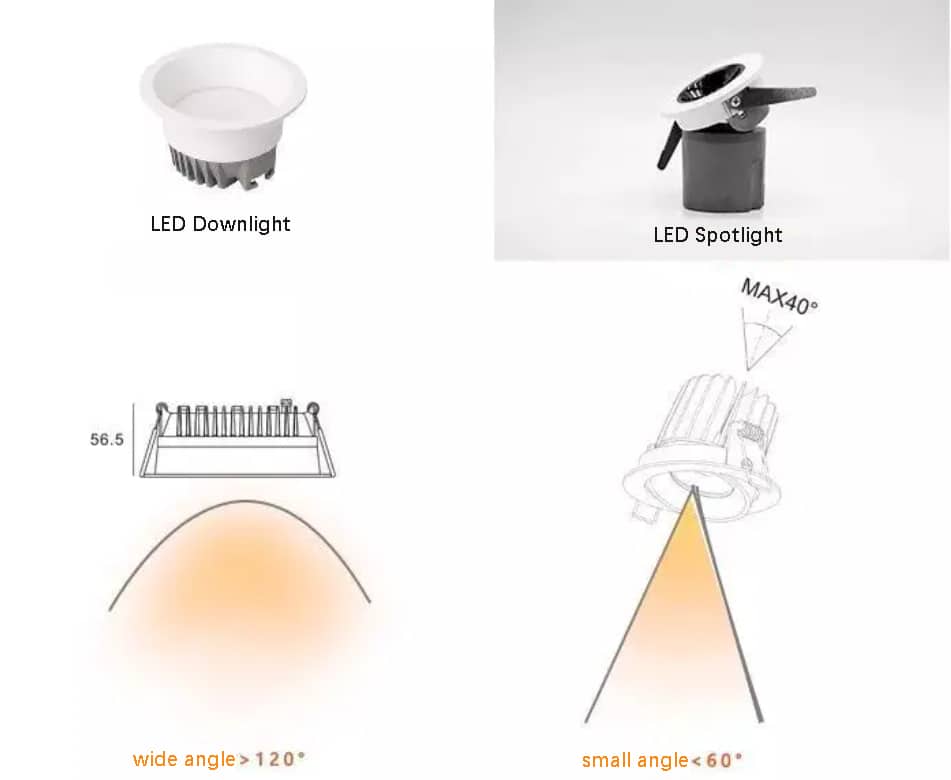
Six Key Parameters to Consider When Choose Spotlights
Beam Angle
In simple terms, it is the angle formed by the boundary lines of the light range. The beam angle of the fixture is reflected on the illuminated wall as the size of the light spot and brightness. For the same light source with different angle reflectors, a larger beam angle results in lower central brightness and a larger light spot.
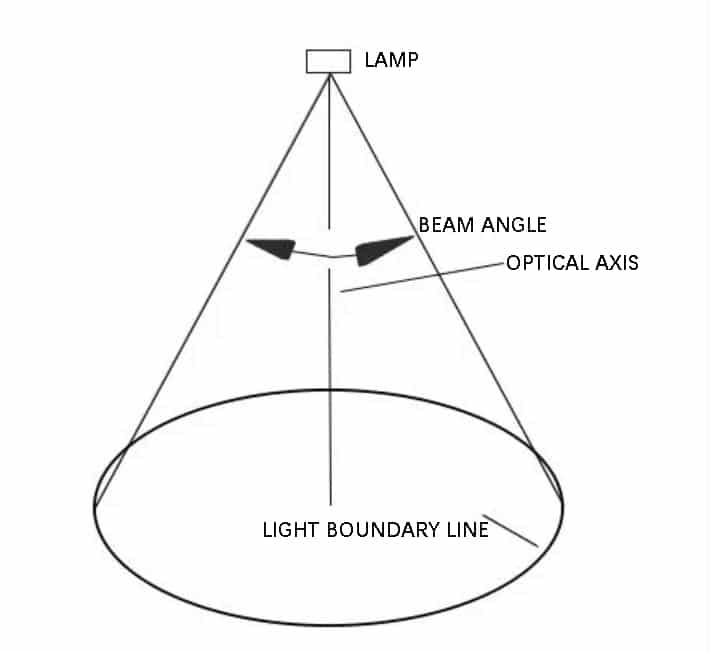
According to the standards set by the CIE (International Commission on Illumination), a beam angle of less than 20° is considered narrow beam angle, while 20° to 40° is classified as a medium beam angle. Spotlight beam angles available in the market are 15°, 24°, and 36 °. Of course, for wide angle LED spotlight like 60°, 90°, we can offer you a customized solution.

15° beam angle is narrow, providing strong central brightness and concentrated light, which creates a sharp contrast on the illuminated surface and is mostly used for accent lighting.15° degree LED spotlights illuminate many exquisite and small ornaments in museums, and in home decor, they can be used to highlight specific decorations, making them the visual focal.
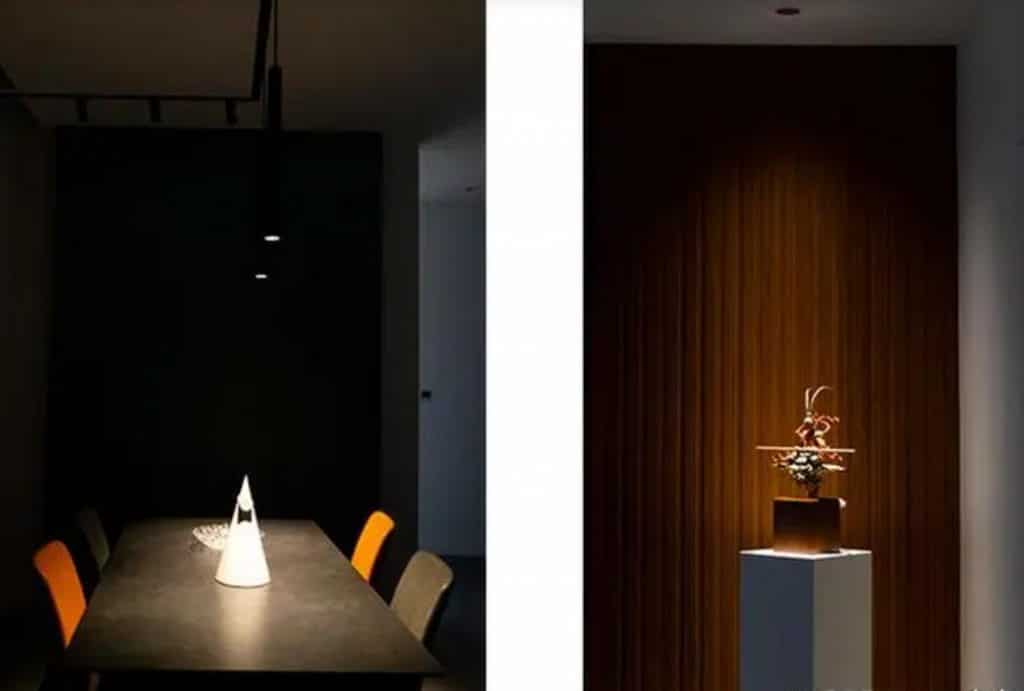
24° beam angle is suitable for accent lighting and wall washing. It enhances light layering and the contrast between light and dark in a space. When used for wall washing, it creates a relatively clear hill-shaped light spot.

36° beam angle produces a relatively soft light spot on the illuminated surface, creating a more even, wide arc of light. It is ideal for illuminating decorative items on walls, such as artwork, highlighting their texture and colors. It can also be used for aisles and corridor lighting, as the light will not be too concentrated.
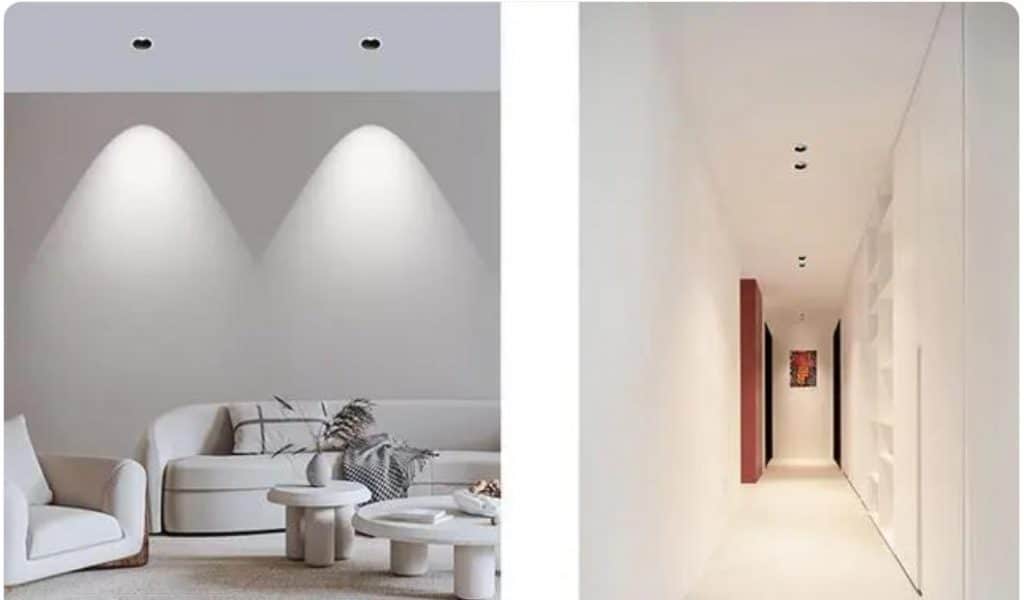
When choosing the beam angle of the spotlights, we need to consider the role of the light in the space: Basic lighting, accent lighting, wall washing, wall grazing, illuminating artwork, or providing supplementary light. Furthermore, what kind of lighting ambiance do you want to show in the space? Should it be bright and soft, rich in light and shadow layers, or bright with focal points? Based on the desired effect, select the appropriate beam angle.
| Spotlight angle | Application |
| 15-20 degree | Accent lighting for artwork, sculptures, and displays |
| 20-45 degree | Balanced lighting for retail displays, dining tables, and lounge areas |
| 60 wide angle | Wider coverage for hotel lobbies, meeting rooms, and living rooms |
| 90 large angle | General illumination for showrooms, open offices, and shopping malls |
Color Temperature
Warm light or white light mainly depends on color temperature. The higher the color temperature, the whiter the light; the lower the color temperature, the yellower the light. Generally, the color temperature commonly used in home lighting ranges from 3000K to 4500K.
Anti-glare
It’s best to buy spotlights with an anti-glare design for comfortable lighting and better quality. There are two main types of anti-glare spotlights:
- Spotlights with a honeycomb anti-glare grid, which has a good anti-glare effect, but will reduce the brightness to a certain extent, and is relatively less beautiful.
- Spotlights with at least 35mm deep reflector, offering a sleeker and attractive appearance.
CRI ( Ra)
The national standard is above 80, but a rating above 90 is better. The higher the CRI (Color Rendering Index), the better the ability to display the true colors of objects.
Lumen
Wattage impacts brightness, measured in lumens. 7 Watt spotlight is ideal for wall washing. For brighter spaces, choose higher wattage.
Light Spot
A good light spot should have the following characteristics:
- Avoid tire marks on the edge of the light spot.
- No yellow spots in the center or at the edge;
- The shape of the light spot should be regular and beautiful.
- The transition from the center to the edge of the light spot should be natural.

Choosing the right lighting is just the first step; proper installation is key to achieving the desired effect.
Distance from the Wall
The distance of spotlights from the wall affects the wall washing effect. Spotlights positioned 15cm from the wall are suitable for illuminating three-dimensional decorative items on the floor. Spotlights 25-30cm from the wall are ideal for highlighting the wall or wall art, while those 50cm away are best for illuminating large wall areas. If you prefer a sharper hill-like effect, position the spotlight closer to the wall; for a softer, rounder light spot, place it further away.
Installation Spacing
The distance between spotlights is generally 10cm to 150cm, and they don’t need to be arranged evenly. For wall washing lights, it’s recommended to space them 30-50cm apart for a more visually appealing light effect.
After all this, some people may still be unsure about how to choose—no worries. We’ve just launched a new product that functions as both a spotlight and a downlight. The key feature of this spotlight is its adjustable angle, offering three degrees in one fixture. 60° wide angle led spotlight can be customized.
The above discussed how to choose lighting fixtures for good light effects. Next, we’ll talk about how to choose high-quality lighting fixtures.
4 Tips for Buying the Best LED Spotlight
LED Driver
As the core component of a spotlight, the brand and quality of the driver often determine its lighting performance and lifespan. We GRNLED often use LiFud , Eaglerise, Philips driver for indoor lighting fixtures with 5-year warranty.
LED Chip
The chip is as important as the driver, directly affecting the brightness, lifespan, and light decay of the lamp. For LED chips, it’s recommended to choose well-known brands like Osram, Philips, and Sanan…
Housing
Commonly, housing for spotlight includes metal, PVC, and ceramic. For better heat dissipation , we typically recommend metal or ceramic housing, though both come with relatively higher costs.
Appearance
A high-quality spotlight should be excellent both inside and out. For example, when you touch it, check if the surface is smooth without noticeable scratches or sharp edges. Gently shake it to see if there are any internal noises—if you hear any, then no.

Hello, customers
My name is Ricky Wang, I’m the business manager of GRNLED. I have been in LED lights industry for more than 10 year. Feel free to contact us. I’m happy to provide you the best service and products.
Email: info@grnled.com | WeChat: ledfixture

